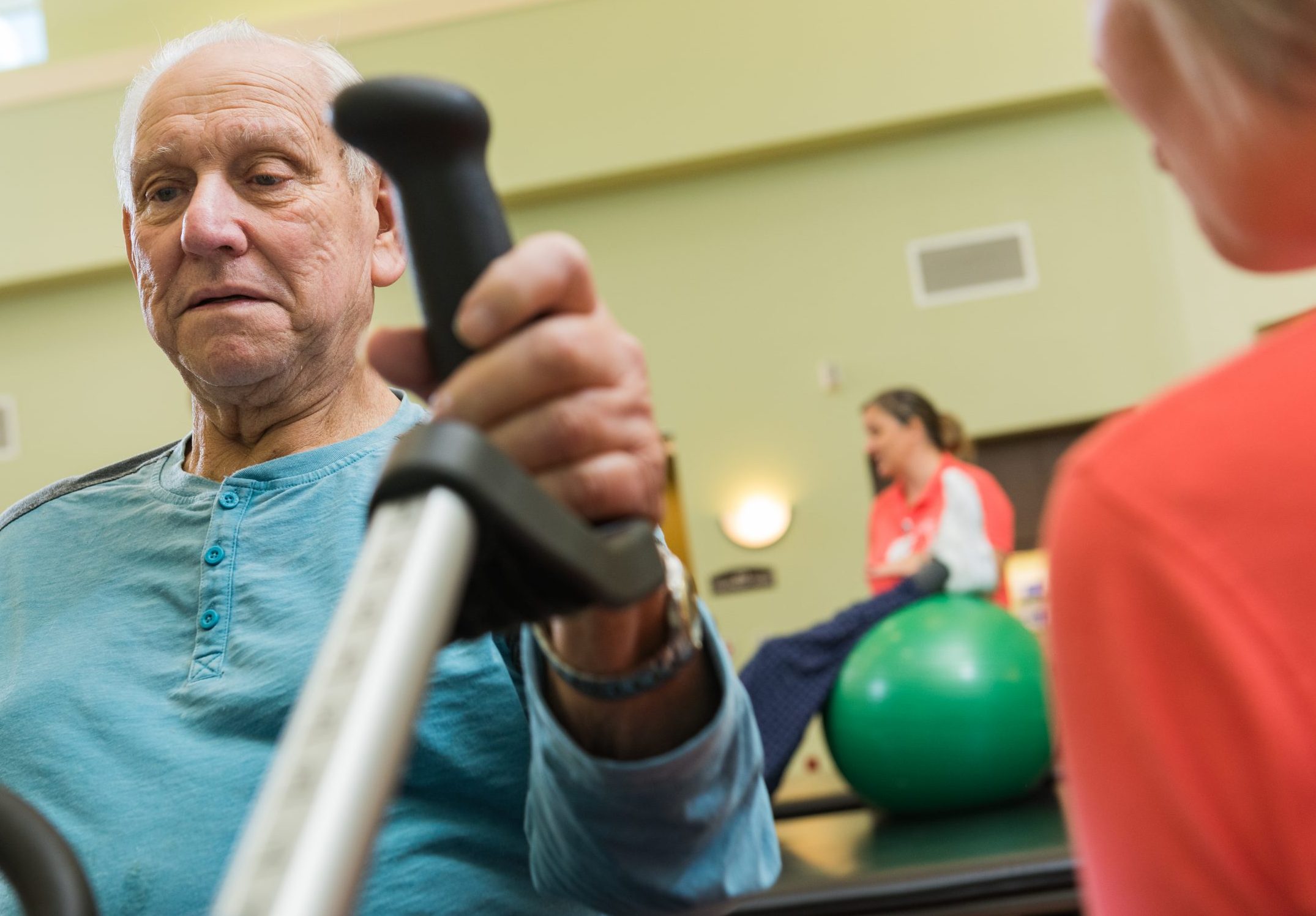What is geriatric rehabilitation?
Geriatric rehabilitation focuses on improving functional abilities and participation in meaningful activities by looking at the whole person. Aging adults experience age-related and condition-related changes; our trained clinicians will create a personalized plan to help you reach your goals.
Common conditions treated
Geriatric rehabilitation can address neurologic and orthopedic conditions in aging adults. However, these are common conditions and syndromes that geriatric rehabilitation can address.
- Weakness
- Falls and fall safety
- Balance impairments
- Osteoporosis and low bone density
- Deconditioning
- Chronic Obstructive Pulmonary Disease (COPD)
- Heart Failure
- Hospital-acquired deconditioning and post-ICU syndrome
- Orthopedic conditions in individuals with dementia
- Senior athletes
- Osteoarthritis
- Frailty
You can also ask about physical therapy to establish an exercise program that is safe and tailored to you and your health status.
Types of therapy used in geriatric rehab
Geriatric rehabilitation may include the following therapies:
- Physical therapy to improve mobility, and physical function.
- Occupational therapy to improve your ability to perform daily tasks.
- Speech and language therapy to improve communication, swallowing, and cognitive skills.
Benefits of geriatric therapy
We aim to empower you to enjoy participation in life activities. You can expect improved physical performance, confidence with daily activities, and interaction with others. We typically focus on creating tailored exercise and/or physical activity prescriptions to reach your goals and maximize your health as you age.
What makes a geriatric physical therapist unique?
A geriatric physical therapist understands that you may have multiple factors related to your reason for seeking care. We will ensure that your plan includes functional interventions that are specific to your goals. Intensity is also important to us because it maximizes outcomes. Intensity may increase over time to ensure treatment interventions are effective in order to reach your specific goals.
What to expect
You should arrive 15-20 minutes early to your first appointment. You may need extra time if you are unsure about parking and/or the building location. Wear comfortable clothing and shoes that allow access to the region being examined. Bring your identification, insurance information, medication list, therapy referral, and related documents (if in your possession).
The first appointment will be an evaluation. This will include a review of your medical history. A physical examination will be performed to assess your current physical status. Next, a plan of care will be developed by your therapist based on your specific goals. You will have time to ask questions and clarification.
Treatment visits are typically about 1 hour. They often include therapeutic exercise and activities, with potential use of neuromuscular exercise and hands on manual therapy. We will also build a home exercise or activity prescription which a very important part of your plan of care. Throughout your episode of care, your therapist will re-assess your physical status and update the plan accordingly.
How to find geriatric physical therapy
All of our clinicians who treat adults can provide geriatric rehabilitation. If you feel like you or your loved one has multiple conditions or significant limitations, discuss this when scheduling your evaluation to ensure your needs will be met appropriately.
